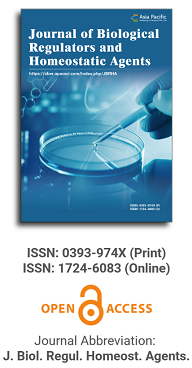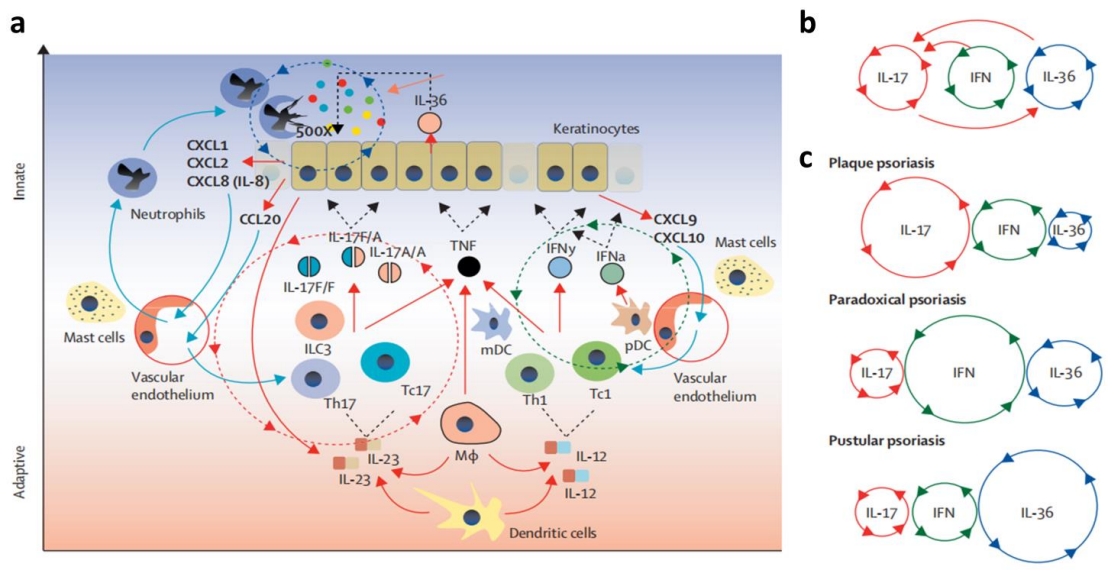
Asia Pacific Academy of Science Pte. Ltd. (APACSCI) specializes in international journal publishing. APACSCI adopts the open access publishing model and provides an important communication bridge for academic groups whose interest fields include engineering, technology, medicine, computer, mathematics, agriculture and forestry, and environment.

Diagnosis of perianal fistula with diffusion-weighted MRI
Vol 39, Issue 3, 2025
Download PDF
Abstract
Background: Contrast enhanced T1- weighted (CE-T1W) magnetic resonance imaging (MRI) is the preferred imaging modality for assessing perianal fistulae (PAF), it provides accurate detection and characterization of PAF. The study aims to assess the use of diffusion weighted MRI (DWMRI) alone as an alternative approach to CE-T1W-MRI and the identify optimal b-values in the obtained DWMRI for assessing anatomy and pathophysiology of PAF. Methods: 37 perianal fistula (PAF) patients who are in preoperative procedures with an average age of 40 ± 11.5 years, were recruited in this study. All patients were imaged on a 3.0 Tesla MRI scanner using CE-T1W sequence and DWMRI for b values of 50, 400, 800 and 1600 s/mm2. The ratio of the mean region of interest (ROI) that is measured from 50% of the maximum for the lesion to a reference background in images of both approaches. Coefficient of variation was also applied in the assessment of the two approaches. The analyses were carried out using the Mann-Whitney U test. Results: ROI measurements were 203 ± 48 and 68 ± 24 in the ROI of the lesion, and 116 ± 20 and 31 ± 6 for the reference background ROI for CE-T1WMRI and DWMRI, respectively; the values were represented as mean ± STD. The lower b value (<100 s/mm2) of DWI reveals higher image resolution of the anatomical structures compared to higher b values; however, higher b values were better than lower b values in image contrast. The percentage of coefficient of variation was not statistically significantly different between CE-T1WMRI and DWMRI (p-value = 0.079). Conclusions: The findings show that DWMRI has statistically similar efficacy with respect to CE-T1WMRI in the diagnosis of PAF. Thus, this may suggest that DWMRI ought to be regularly included in typical MRI procedures for diagnosing PAF.
Keywords
References
1. Kawecki MP, Kruk AM, Drążyk M, et al. Exploring Perianal Fistulas: Insights into Biochemical, Genetic, and Epigenetic Influences—A Comprehensive Review. Gastroenterology Insights. 2025; 16(1): 10. doi: 10.3390/gastroent16010010
2. Kummari S, Burra KG, Reddy VRK, et al. The Role of Magnetic Resonance Imaging in Pre-operative Assessment of Anorectal Fistula With Surgical Correlation. Cureus. Published online January 30, 2024. doi: 10.7759/cureus.53237
3. Ji L, Zhang Y, Xu L, et al. Advances in the Treatment of Anal Fistula: A Mini-Review of Recent Five-Year Clinical Studies. Frontiers in Surgery. 2021; 7. doi: 10.3389/fsurg.2020.586891
4. García-Olmo D, Van Assche G, Tagarro I, et al. Prevalence of Anal Fistulas in Europe: Systematic Literature Reviews and Population-Based Database Analysis. Adv Ther. 2019; 36: 3503–3518. doi: 10.1007/s12325-019-01117-y
5. Zanotti C, Martinez-Puente C, Pascual I, et al. An assessment of the incidence of fistula-in-ano in four countries of the European Union. International Journal of Colorectal Disease. 2007; 22: 1459–1462. doi: 10.1007/s00384-007-0334-7
6. Singh K. Magnetic Resonance Imaging (MRI) Evaluation of Perianal Fistulae with Surgical Correlation. Journal of Clinical and Diagnostic Research. 2014. doi: 10.7860/jcdr/2014/7328.4417
7. Li J, Yang W, Huang Z, et al. Clinical characteristics and risk factors for recurrence of anal fistula patients. Chinese Journal of Gastrointestinal Surgery. 2016; 19(12): 1370-1374.
8. Park SH, Aniwan S, Scott Harmsen W, et al. Update on the Natural Course of Fistulizing Perianal Crohn’s Disease in a Population-Based Cohort. Inflammatory Bowel Diseases. 2018; 25(6): 1054-1060. doi: 10.1093/ibd/izy329
9. de Miguel Criado J, del Salto LG, Rivas PF, et al. MR Imaging Evaluation of Perianal Fistulas: Spectrum of Imaging Features. RadioGraphics. 2012; 32(1): 175-194. doi: 10.1148/rg.321115040
10. Sharma A, Yadav P, Sahu M, et al. Current imaging techniques for evaluation of fistula in ano: a review. Egyptian Journal of Radiology and Nuclear Medicine. 2020; 51(1). doi: 10.1186/s43055-020-00252-9
11. Cicero G, Ascenti G, Blandino A, et al. Overview of the Large Bowel Assessment using Magnetic Resonance Imaging: Different Techniques for Current and Emerging Clinical Applications. Current Medical Imaging Formerly Current Medical Imaging Reviews. 2022; 18(10): 1031-1045. doi: 10.2174/1573405618666220331111237
12. Gnanadev R, Malkoc A, Nguyen A, et al. The Impact of Computed Tomography Scans on the Management and Wait Times in Perianal Abscess Diagnoses. Cureus. 2023. doi: 10.7759/cureus.49417
13. Sudoł-Szopińska I, Kucharczyk A, Kołodziejczak M, et al. Porównanie badania endosonograficznego i rezonansu magnetycznego w diagnostyce wysokich przetok odbytu. Journal of Ultrasonography. 2014; 14(57): 142-151. doi: 10.15557/jou.2014.0014
14. Morris J, Spencer JA, Ambrose NS. MR Imaging Classification of Perianal Fistulas and Its Implications for Patient Management. RadioGraphics. 2000; 20(3): 623-635. doi: 10.1148/radiographics.20.3.g00mc15623
15. Gage KL, Deshmukh S, Macura KJ, et al. MRI of perianal fistulas: bridging the radiological–surgical divide. Abdominal Imaging. 2012; 38(5): 1033-1042. doi: 10.1007/s00261-012-9965-4
16. Barbosa PCSP, Camilo DMR, Nunes TF, et al. Comparison between conventional and structured magnetic resonance imaging reports in perianal fistula. Journal of Coloproctology. 2020; 40(1): 31-36. doi: 10.1016/j.jcol.2019.10.003
17. Sahni VA, Ahmad R, Burling D. Which method is best for imaging of perianal fistula? Abdominal Imaging. 2007; 33(1): 26-30. doi: 10.1007/s00261-007-9309-y
18. Liang C, Jiang W, Zhao B, et al. CT imaging with fistulography for perianal fistula: does it really help the surgeon? Clinical Imaging. 2013; 37(6): 1069-1076. doi: 10.1016/j.clinimag.2013.04.014
19. Cavusoglu M, Duran S, Sözmen Cılız D, et al. Added value of diffusion-weighted magnetic resonance imaging for the diagnosis of perianal fistula. Diagnostic and Interventional Imaging. 2017; 98(5): 401-408. doi: 10.1016/j.diii.2016.11.002
20. Villa C, Pompili G, Franceschelli G, et al. Role of magnetic resonance imaging in evaluation of the activity of perianal Crohn’s disease. European Journal of Radiology. 2012; 81(4): 616-622. doi: 10.1016/j.ejrad.2011.01.046
21. Marckmann P, Skov L, Rossen K, et al. Nephrogenic Systemic Fibrosis. Journal of the American Society of Nephrology. 2006; 17(9): 2359-2362. doi: 10.1681/asn.2006060601
22. Wahsner J, Gale EM, Rodríguez-Rodríguez A, et al. Chemistry of MRI Contrast Agents: Current Challenges and New Frontiers. Chemical Reviews. 2018; 119(2): 957-1057. doi: 10.1021/acs.chemrev.8b00363
23. Tweedle MF. Gadolinium Retention in Human Brain, Bone, and Skin. Radiology. 2021; 300(3): 570-571. doi: 10.1148/radiol.2021210957
24. Park SH. DWI at MR Enterography for Evaluating Bowel Inflammation in Crohn Disease. American Journal of Roentgenology. 2016; 207(1): 40-48. doi: 10.2214/ajr.15.15862
25. Yoshizako T, Wada A, Takahara T, et al. Diffusion-weighted MRI for evaluating perianal fistula activity: Feasibility study. European Journal of Radiology. 2012; 81(9): 2049-2053. doi: 10.1016/j.ejrad.2011.06.052
26. Soydan L. Evaluation of Activity of Perianal Fistulas by Diffusion- Weighted Imaging. Turkish Journal of Colorectal Disease. 2022; 32(4): 245-251. doi: 10.4274/tjcd.galenos.2022.2021-12-15
27. Wesbey GE, Moseley ME, Ehman RL. Translational Molecular Self-Diffusion in Magnetic Resonance Imaging. Investigative Radiology. 1984; 19(6): 491-498. doi: 10.1097/00004424-198411000-00005
28. Le Bihan D. Apparent Diffusion Coefficient and Beyond: What Diffusion MR Imaging Can Tell Us about Tissue Structure. Radiology. 2013; 268(2): 318-322. doi: 10.1148/radiol.13130420
29. Agarwal HK, Mertan FV, Sankineni S, et al. Optimal high b-value for diffusion weighted MRI in diagnosing high risk prostate cancers in the peripheral zone. Journal of Magnetic Resonance Imaging. 2016; 45(1): 125-131. doi: 10.1002/jmri.25353
30. Wang Y, Tadimalla S, Rai R, et al. Quantitative MRI: Defining repeatability, reproducibility and accuracy for prostate cancer imaging biomarker development. Magnetic Resonance Imaging. 2021; 77: 169-179. doi: 10.1016/j.mri.2020.12.018
31. Sarda H, Pandey A, Regmi S, et al. Magnetic resonance imaging for fistulography in perianal fistula: clinicoradiological correlation. International Surgery Journal. 2022; 9(9): 1553. doi: 10.18203/2349-2902.isj20222094
32. Akhoundi N, Bozchelouei JK, Abrishami A, et al. Comparison of MRI and Endoanal Ultrasound in Assessing Intersphincteric, Transsphincteric, and Suprasphincteric Perianal Fistula. Journal of Ultrasound in Medicine. 2023; 42(9): 2057-2064. doi: 10.1002/jum.16225
33. Li J, Chen SN, et al. Diagnostic Accuracy of Three-Dimensional Endoanal Ultrasound for Anal Fistula: A Systematic Review and Meta-analysis. The Turkish Journal of Gastroenterology. 2021; 32(11): 913-922. doi: 10.5152/tjg.2021.20750
34. Alshoabi SA, Binnuhaid AA, Hamid AM, et al. Ultrasound assessment of low type intersphincteric perianal fistulas in Yemen. Scientific Reports. 2025; 15(1). doi: 10.1038/s41598-025-06284-3
35. Sayed A, El-azizi HMS, El-barmelgi MYA, et al. Role of endoanal ultrasound in the assessment of perianal fistula in correlation with MRI fistulography. Egyptian Journal of Radiology and Nuclear Medicine. 2022; 53(1). doi: 10.1186/s43055-022-00869-y
36. Chen IE, Ferraro R, Chow L, et al. Guided tour of hidden tracts in the pelvis: exploring pelvic fistulas. Archives of Gynecology and Obstetrics. 2021; 304(4): 863-871. doi: 10.1007/s00404-021-06144-1
37. Madany AH, Murad AF, Kabbash MM, et al. Magnetic resonance imaging in the workup of patients with perianal fistulas. Egyptian Journal of Radiology and Nuclear Medicine. 2023; 54(1). doi: 10.1186/s43055-023-00975-5
38. Zhao WW, Yu J, Shu J, et al. Precise and comprehensive evaluation of perianal fistulas, classification and related complications using magnetic resonance imaging. American journal of translational research. 2023; 15(5): 3674–3685.
39. Sainio P. Fistula-in-ano in a defined population. Incidence and epidemiological aspects. Annales chirurgiae et gynaecologiae. 1984; 73(4): 219-224.
40. Garg P, Kaur B, Yagnik VD, et al. Guidelines on postoperative magnetic resonance imaging in patients operated for cryptoglandular anal fistula: Experience from 2404 scans. World Journal of Gastroenterology. 2021; 27(33): 5460-5473. doi: 10.3748/wjg.v27.i33.5460
41. Balci S, Onur MR, et al. MRI evaluation of anal and perianal diseases. Diagnostic and Interventional Radiology. 2019; 25(1): 21-27. doi: 10.5152/dir.2018.17499
42. Yoshizako T, Kitagaki H. A pictorial review of the impact of adding diffusion-weighted MR imaging to other MR sequences for assessment of anal fistulae. Japanese Journal of Radiology. 2013; 31(6): 371-376. doi: 10.1007/s11604-013-0204-x
43. Alyami AS. Imaging of Ulcerative Colitis: The Role of Diffusion-Weighted Magnetic Resonance Imaging. Journal of Clinical Medicine. 2024; 13(17): 5204. doi: 10.3390/jcm13175204
44. Sho S, Dawes AJ, Chen FC, et al. Operative Incision and Drainage for Perirectal Abscesses: What Are Risk Factors for Prolonged Length of Stay, Reoperation, and Readmission? Diseases of the Colon & Rectum. 2020; 63(8): 1127-1133. doi: 10.1097/dcr.0000000000001653
45. Gaertner WB, Burgess PL, Davids JS, et al. The American Society of Colon and Rectal Surgeons Clinical Practice Guidelines for the Management of Anorectal Abscess, Fistula-in-Ano, and Rectovaginal Fistula. Diseases of the Colon & Rectum. 2022; 65(8): 964-985. doi: 10.1097/dcr.0000000000002473
46. Balan N, Liu JK, Braschi C, et al. Sex-based analysis of characteristics contributing to anorectal abscesses requiring acute care surgery. Surgery in Practice and Science. 2023; 12: 100156. doi: 10.1016/j.sipas.2023.100156
47. Sanchez-Haro E, Vela E, Cleries M, et al. Clinical characterization of patients with anal fistula during follow-up of anorectal abscess: a large population-based study. Techniques in Coloproctology. 2023; 27(10): 897-907. doi: 10.1007/s10151-023-02840-z
48. Andreou C, Zeindler J, Oertli D, et al. Longterm outcome of anal fistula – A retrospective study. Scientific Reports. 2020; 10(1). doi: 10.1038/s41598-020-63541-3
49. Boruah DK, Hazarika K, Ahmed H, et al. Role of Diffusion-Weighted Imaging in the Evaluation of Perianal Fistulae. Indian Journal of Radiology and Imaging. 2021; 31(1): 91-101. doi: 10.1055/s-0041-1729673
50. Mohsen LA, Osman NM. Diffusion-weighted imaging in the evaluation of perianal fistula and abscess. Egyptian Journal of Radiology and Nuclear Medicine. 2020; 51. doi: 10.1186/s43055-020-00193-3
51. Dohan A, Eveno C, Oprea R, et al. Diffusion-weighted MR imaging for the diagnosis of abscess complicating fistula-in-ano: preliminary experience. European Radiology. 2014; 24: 2906–2915. doi: 10.1007/s00330-014-3302-y
52. Takahara T, Kwee TC. Low b‐value diffusion‐weighted imaging: Emerging applications in the body. Journal of Magnetic Resonance Imaging. 2012; 35(6): 1266-1273. doi: 10.1002/jmri.22857
53. Hori M, Oto A, Orrin S, et al. Diffusion‐weighted MRI: A new tool for the diagnosis of fistula in ano. Journal of Magnetic Resonance Imaging. 2009; 30(5): 1021-1026. doi: 10.1002/jmri.2193
54. Cattapan K, Chulroek T, Kordbacheh H, et al. Contrast- vs. non-contrast enhanced MR data sets for characterization of perianal fistulas. Abdominal Radiology. 2019; 44: 446-455. doi: 10.1007/s00261-018-1761-3
Supporting Agencies
Ha’il University
Copyright (c) 2025 Author(s)

This work is licensed under a Creative Commons Attribution 4.0 International License.

This site is licensed under a Creative Commons Attribution 4.0 International License (CC BY 4.0).

Medical Genetics, University of Torino Medical School, Italy

Department of Biomedical, Surgical and Dental Sciences, University of Milan, Italy

